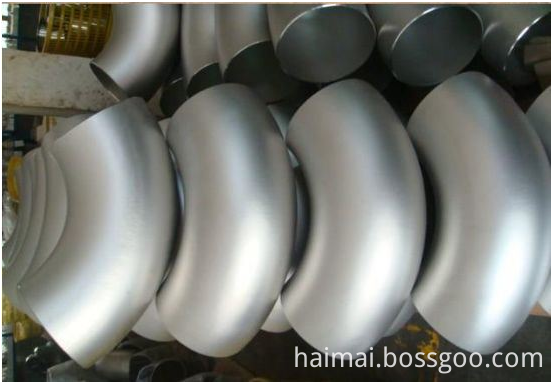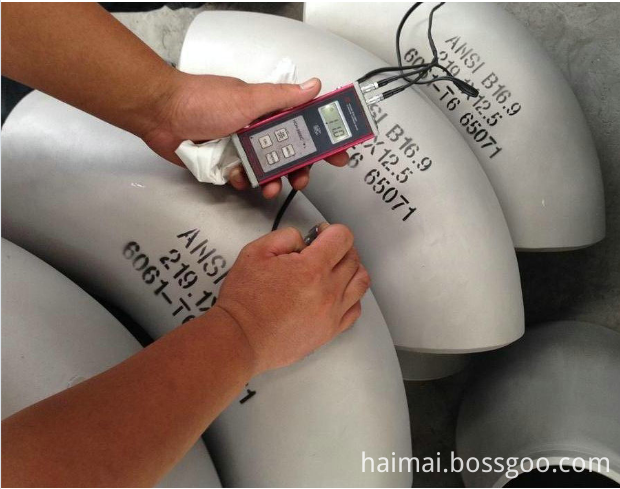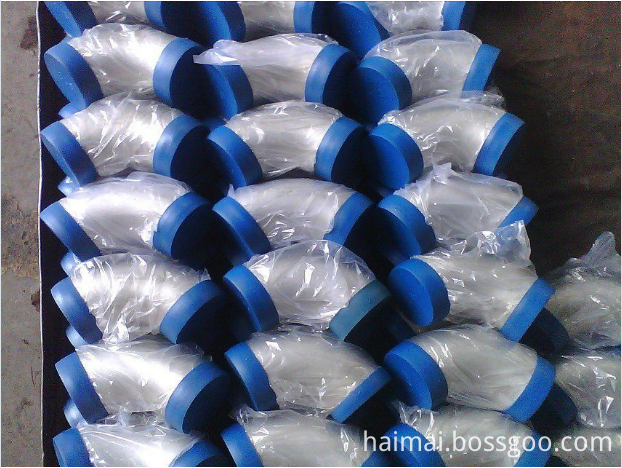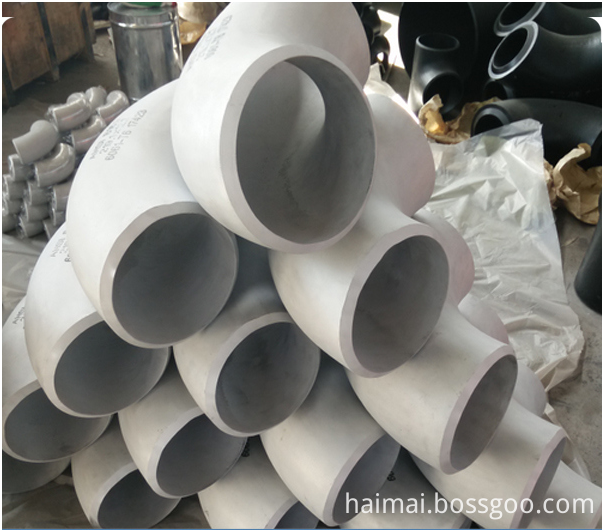First, the pump equipment
A pump is a machine that delivers or pressurizes a liquid. It transfers the mechanical energy of the prime mover or other external energy to the liquid, increasing the energy of the liquid. The pump is mainly used to transport liquids such as water, oil, acid and alkali, emulsion, suspoemulsion and liquid metal, as well as liquids, gas mixtures and liquids containing suspended solids.
Application field
In the chemical and petroleum sectors, raw materials, semi-finished products and finished products are mostly liquids, and the preparation of raw materials into semi-finished and finished products requires a complicated process in which the pump acts as a pressure source for transporting liquids and providing chemical reactions. In addition, in many devices, pumps are also used to regulate the temperature.
Pumps are also the most used equipment in the mining and metallurgical industries. The mine needs to use pump drainage. In the process of mineral processing, smelting and rolling, pumps are needed to supply water.
In the power sector, nuclear power plants require nuclear main pumps, secondary pumps, tertiary pumps, and thermal power plants that require a large number of boiler feed pumps, condensate pumps, circulating pumps, and ash pumps.
Selection principle
1. The type and performance of the selected pump are in accordance with the process parameters such as flow, lift, pressure, temperature, cavitation flow, and suction.
2. The characteristics of the media must be met. For pumps that transport flammable, explosive, toxic or valuable media, it is required to use shaft seals reliably or use non-leakage pumps, such as magnetic drive pumps, diaphragm pumps, and shield pumps for pumps that transport corrosive media. Corrosion-resistant materials are required for convection components. . For pumps containing solid particulate media, it is required that the convection component be made of wear-resistant material, and if necessary, the shaft seal should be flushed with a cleaning liquid.
3. High mechanical reliability, low noise and low vibration.
4. Economically, it is necessary to take into account the lowest total cost of equipment, operating, maintenance and management fees.
5. The centrifugal pump has the characteristics of high speed, small volume, light weight, high efficiency, large flow, simple structure, no pulsation of infusion, stable performance, easy operation and convenient maintenance.
Second, dust removal equipment
Dust removal equipment refers to the equipment that separates dust from the flue gas, also known as dust collector. Everyone has the experience of wearing a mask. The mask is a simple filter dust removal device. The dust removal mechanism of the dust removal device is very simple, and it is realized by the mechanical interception of the fly ash particles in the flue gas by the filter material, like the dust removal mechanism of the mask. But in addition, the fly ash particles received first form a stable dense ash layer (generally called filter cake or filter bed) on the surface of the filter material, which plays a very good filtering role, especially It is a dust removal device that uses a cloth to make a filter bag. This filter bed plays a major filtering role.
Features:
The dust removal equipment utilizes the dust removal water pipe and the pressure air pipeline in the underground, adds certain additives in the water, introduces the wind pressure, and completes a series of processes such as suction---mixing---foaming through special equipment to generate foam. Sprayed onto the dust source through the dispenser and the nozzle holder assembly. The foam acts on the dust through good coverage, wetting, adhesion, etc., effectively reducing the dust concentration on the mining surface, greatly improving the working environment of the mining face, improving the working efficiency of the underground workers, and effectively reducing the dust of the first-line workers. The incidence of the disease.
Third, the extraction equipment
The extraction equipment is a kind of mass transfer equipment used for the extraction operation, which can achieve perfect separation of the components contained in the feed liquid. The extraction equipment can be divided into a mixing clarifier, an extraction tower and a centrifugal extractor according to the structure. The extraction device, also known as the extractor, is a kind of mass transfer equipment used for the extraction operation, which can make the extractant and the liquid well contact, and realize the perfect separation of the components contained in the liquid, and there are two types of classification contact and differential contact. In an extraction apparatus, usually one phase is dispersed in another phase in a droplet state, and is rarely dispersed in a liquid film state.
Application: Simple, high processing capacity, and high separation efficiency, widely used in petroleum refining industry and petrochemical industry.
Fourth, the valve
Valves are fluid systems that control the direction, pressure, and flow of fluids as devices that allow the piping and the medium (liquid, gas, powder) within the equipment to flow or stop and control its flow. The valve is a control component in the pipeline fluid delivery system. It is used to change the passage section and the flow direction of the medium, and has the functions of diversion, cutoff, throttling, check, split or overflow relief. Valves for fluid control, from the simplest shut-off valves to the wide variety of valves used in extremely complex automatic control systems, the variety and specifications of the valve, the nominal diameter of the valve from a very small instrument valve to a diameter of up to 10m Valves for industrial piping. It can be used to control various types of fluids such as water, steam, oil, gas, mud, various corrosive media, liquid metal and radioactive fluid. The working pressure of the valve can be from 0.0013MPa to 1000MPa. -270 ° C ultra-low temperature to 1430 ° C high temperature.
The valve can be controlled by various transmission methods, such as manual, electric, hydraulic, pneumatic, turbo, electromagnetic, electromagnetic hydraulic, electrohydraulic, gas-hydraulic, spur gear, bevel gear drive, etc.; can be under pressure, temperature Under the action of other forms of sensing signals, according to predetermined requirements, or simply open or close without relying on the sensing signal, the valve relies on a driving or automatic mechanism to cause the opening and closing member to be lifted, slid, swiveled or swiveled. Movement, thereby changing the size of its flow path area to achieve its control function.
V. Reaction kettle
The general understanding of the reactor is a container with physical or chemical reaction. Through the structural design and parameter configuration of the container, the heating, evaporation, cooling and low-speed mixing function required by the process are realized.
The reactor is widely used in petroleum, chemical, rubber, pesticide, dye, medicine, food, pressure vessels for the process of vulcanization, nitration, hydrogenation, alkylation, polymerization, condensation, etc., such as reactor, reaction pot, decomposition pot , polymerizer, etc.;
The reaction vessel is a comprehensive reaction vessel, and the structure of the reactor structure and the configuration of the accessories are designed according to the reaction conditions. From the beginning of the feed-reaction-discharge, the pre-set reaction steps can be completed with a high degree of automation, temperature, pressure, mechanical control (stirring, blasting, etc.), reactants/products during the reaction. Strict regulation of important parameters such as concentration. The structure generally consists of a kettle body, a transmission device, a stirring device, a heating device, a cooling device, and a sealing device. Corresponding auxiliary equipment: fractionation column, condenser, water separator, collection tank, filter, etc.
Six, the fan
Fans are the abbreviation of China's gas compression and gas transmission machinery. The so-called fans include: fans, blowers, wind turbines. Gas compression and gas delivery machinery is a machine that converts rotating mechanical energy into gas pressure and kinetic energy and delivers the gas. The main structural components of the fan are the impeller, the casing, the air inlet, the bracket, the motor, the pulley, the coupling, the muffler, the transmission (bearing) and the like.
Application areas:
Fans are mainly used in the ventilation and ventilation of metallurgy, petrochemical, electric power, urban rail transit, textiles, ships and other fields of the national economy as well as various places. In addition to the traditional application fields, there will still be great development prospects in more than 20 potential market areas such as comprehensive utilization of coal gangue, technological transformation of new dry clinker, energy conservation of metallurgical industry and comprehensive utilization of resources.
Seven, drying equipment
Drying equipment is also known as dryers and dryers. A device for performing a drying operation by vaporizing a moisture component (generally referred to as moisture or other volatile liquid component) in a material to obtain a solid material having a prescribed moisture content. The purpose of drying is for the purpose of material use or further processing. For example, the drying of wood before the production of wood molds and woodware can prevent the deformation of the product, and the drying of the ceramic blank before calcining the two drying equipment can prevent the product from cracking. In addition, the dried material is also convenient for transportation and storage, such as drying the harvested food to a certain moisture content to prevent mildew. Since natural drying is far from meeting the needs of production development, various mechanized dryers are becoming more and more widely used.
Application areas:
Petroleum and chemical industries: polymerization, condensation, distillation, melting, dehydration, forced insulation.
Oil industry: fatty acid distillation, oil decomposition, concentration, esterification, vacuum deodorization.
Synthetic fiber industry: polymerization, melting, spinning, stretching, drying.
Plastics and rubber industry: hot pressing, calendering, extrusion, vulcanization molding.
Road construction industry: asphalt melting, insulation
Other industries, etc.
Eight, pipeline
A pipe is a device that is connected by a pipe, a pipe coupling, a valve, or the like for conveying a gas, a liquid, or a fluid with solid particles. Usually, after being pressurized by a blower, a compressor, a pump, a boiler, etc., the fluid flows from a high pressure portion of the pipeline to a low pressure portion, and can also be transported by the pressure or gravity of the fluid itself. Pipes are used in a wide range of applications, including water supply, drainage, heating, gas supply, long-distance transportation of oil and gas, agricultural irrigation, hydraulic engineering, and various industrial installations.
Features and advantages: extremely high wear resistance, high impact resistance, corrosion resistance, good self-lubricity, non-toxic to organisms, unique low temperature resistance, non-fouling, long life and easy installation Other features.
Nine, filtration equipment
Filtration equipment refers to mechanical equipment or devices used for filtration and is a common equipment commonly used in industrial production. The filter equipment is generally divided into two types: vacuum and pressurization. Vacuum is commonly used in the form of drums, discs, horizontal belts, etc. Pressurization is commonly used for pressure filtration, pressing, dynamic filtration and rotary type. Multi-media filters, also known as mechanical impurity filters, are one of the main equipment for water quality pretreatment. According to the water quality, the corresponding design scheme is adopted to efficiently remove impurities such as suspended solids, colloids, sediment, clay, humus and particulate matter in the water body, reduce the turbidity of the water, and achieve the purpose of water quality clarification.
The automatic filter is mainly used for purifying water. It can be used for water filtration in various industries such as industry, agriculture, electric power, electronics, medicine, food, printing and dyeing, construction, steel, metallurgy, paper making, coal mine, swimming pool, landscape, greening, etc. Water treatment and water reform, especially in the field of microfiltration, which requires high water quality. The automatic filter has many functions to remove sediment, clay, rust, suspended solids, algae, biological slime, corrosion products, macromolecular bacteria, Organic matter and other fine particles and other impurities, to achieve the purpose of water purification.
Ten, heat exchanger
A heat exchanger is a device that transfers part of the heat of a hot fluid to a cold fluid, also known as a heat exchanger. Heat exchangers are indispensable equipment for heat exchange and transfer in chemical production processes. In industrial production such as petroleum, chemical, light industry, pharmaceutical, energy, etc., it is often used to heat a low temperature fluid or to cool a high temperature fluid, vaporize the liquid into steam or condense the steam into a liquid. The heat exchanger can be either a unit device such as a heater, a cooler and a condenser, or a component of a process equipment such as a heat exchanger in an ammonia synthesis column. Heat exchangers are important unit equipment in chemical production. According to statistics, the tonnage of heat exchangers accounts for about 20% of the entire process equipment and even up to 30%, occupying a very important position.

A heat exchanger is an energy-saving device that transfers heat between materials at two or more fluids at different temperatures. It transfers heat from a higher fluid to a lower temperature fluid, and the fluid temperature reaches the process specification. The indicator meets the needs of process process conditions while also improving energy efficiency as one of the main equipment. The heat exchanger industry involves nearly 30 industries including HVAC, pressure vessels and water treatment equipment, forming an industrial chain.
XI, distillation equipment
The rectification plant is the equipment used in the rectification operation, and mainly includes a rectification column and a reboiler and a condenser. By setting the discharge ports at different heights of the tower body, products with different compositions can be obtained, which is called side line discharge. The atmospheric and decompression towers in the petroleum refining industry are examples of different products obtained by side-line discharge.

Distillation column: The main equipment that completes the rectification operation.
Reboiler: used to vaporize the bottom liquid part and send it back to the rectification tower to make the contact mass transfer between the vapor and liquid phases in the column.
Condenser: used to condense the overhead vapor into a liquid, part of the condensate as the top product, and the rest as reflux to the top of the column, so that the contact mass transfer between the vapor and liquid phases in the column can be carried out.
Twelve, the compressor
Compressor: A driven fluid machine that promotes low pressure gas to high pressure gas, the heart of the refrigeration system. It sucks low-temperature and low-pressure refrigerant gas from the suction pipe, drives the piston to compress it by running the motor, and then discharges high-temperature and high-pressure refrigerant gas to the exhaust pipe to provide power for the refrigeration cycle, thereby achieving compression→condensation (heat release) ) → expansion → evaporation (endothermic) refrigeration cycle.
Compressor piston compressor, screw compressor, centrifugal compressor, linear compressor, etc. Piston compressors typically consist of a housing, an electric motor, a cylinder, a piston, control equipment (starters and thermal protectors), and a cooling system. Cooling methods are oil cooling and air cooling, and natural cooling. The linear compressor has no shaft, no cylinder block, seal and heat dissipation structure. The magnetic suspension principle and the spiral ring hydrodynamic structure are used to compress the gas to provide power for cooling.
application:
Develop energy-saving products, energy-saving technologies, energy-saving technologies; develop less polluting, pollution-free, low-emission products and processes; promote low-carbon development, circular economy; reduce resource consumption, save resources;
Thirteen, instrument
Instruments and instruments generally refer to equipment or devices that are used exclusively for one purpose or for technical purposes. In general, the instrument is more complex and consists of multiple components. Most instruments are used for certain operations, but there are also instruments that are only used for measurements. Instruments are generally indispensable in scientific research laboratories, in medical research and practice.
Application areas:
Instrumentation and instrumentation covers a wide range of fields, covering industries, agriculture, transportation, science and technology, environmental protection, national defense, culture, education, health, people's lives, etc., and undertakes the tasks of gatekeepers and instructors in the operation of all sectors of national economic construction. Because of its special status and great role, it has a huge multiplication and pulling effect on the national economy, and it has good market demand and huge development potential.
14. Evaporation crystallization equipment
Evaporative crystallization equipment is a common operating unit in pharmaceutical and chemical processes, and is widely used in the production process of almost all crystalline drugs. Evaporative crystallization equipment commonly used in enterprises today mainly consists of evaporative crystallization unit carbon steel, stainless steel and other metal materials are difficult to withstand the corrosion of chloride-containing solutions. At present, only titanium metal can be tolerated in industrial materials, but the price of titanium is very expensive. In the chemical equipment manufacturing industry can not be widely used.
Evaporative crystallization equipment is equipment used in fine chemical production. Such as: sodium chloride, phenylalanine acid, sodium sulfate, ammonium chloride, ammonium glycol;
Source: Chemical 707
We are china Aluminum Elbow company. Manufacturer of standard & custom industrial Aluminum Pipe Fittings Elbows,
Types include standard long radius Aluminum Alloy Elbows & short radius Aluminum alloy elbows in 45 degrees & 90 degrees styles.
Material could be 1060, 6061,6063,5083 Elbows.
Product Name: Aluminum Pipe Elbows; Aluminum Elbows PipeThickness :
3mm-50mm
Outer diameter:
15mm-500mm
Alloy Grade:
1000 series : 1070A,1060,1100,1200
2000 series :2A11,2017,2A12,2024
3000 series :3003 3A21
5000series :5A02,5052,5A03,5A05,5A06,5083,5086,5454
6000 series :6061,6063,6A02,6082,6005
Surface
Mill Finish, Anodized, Powder Coated, Wooden Finish, Polish
Packing
Export standard
Payment Terms
100% irrevocable L/C at sight or 30% T/T in advance as deposit,70% balance before shipment
MOQ
1 Piece
Delivery time
20-45 days after receiving L/C or deposit
Loading Port
Xingang Port,Tianjin





Aluminum Elbow
Aluminum Elbow,Aluminum Elbow Pipe,Aluminum 1060,Aluminum 6063,Aluminum Alloy Elbows,Aluminum 1060 Elbow,90 Degree SR/LR Aluminum Elbow,Aluminum Butt Weld Elbow,Seamless 6063 Aluminum Elbow,Aluminum STD Elbow
HEBEI HANMAC MACHINE CO., LTD. , https://www.chinahanmac.com
